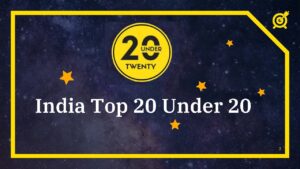Films have a huge impact on the human mind. Films can communicate, embody and articulate the effectiveness of behaviours of leadership.
Hollywood has a variety of award-winning films that portray the heroism and sacrifices of different military leaders in battlefield.
Schindler’s List
Film. Schindler’s List is an American epic historical period drama film released in 1993, directed and co-produced by Steven Spielberg and written by Steven Zaillian. It is based on the novel Schindler’s Ark by Australian novelist Thomas Keneally.
Plot. Schindler’s List illustrates the profoundly nightmarish Holocaust. It re-creates a dark, frightening period during World War II, when Nazi-occupied Krakow first dispossessed Jews of their businesses and homes, then placed in ghettos and forced labour camps in Plaszow, and finally resettled in concentration camps for execution. Oskar Schindler, a German businessperson and an opportunist member of the Nazi party acquires a factory for the production of mess kits and cooking paraphernalia. Without prior experience, he gained a contact, Itzhak Stern, who has links with the underground Jewish business community in the ghetto. They loan him the money for the factory in return for a small share of products produced for trade in the black market. Schindler witnesses the horrifying visions of the Holocaust and the toll it takes on the Jewish people. Schindler’s motivations switch from profit to human sympathy and by lavishly bribing the SS officials; he is able to save over 1,100 Jews from death in the gas chambers.
Leadership Aspects
Two distinct and extreme leadership pattern are visible for two characters in this movie.
Oskar Schindler is the transformational leader Schindler is a perceptive, charismatic businessperson who can do anything to make a fortune. Schindler slowly transforms to a courageous, sympathetic leader determined to use his power and persuasive charisma for the betterment of the Jews. Sacrificing his safety and wealth to help others, Schindler bravely stands up for what he believes in through bribing Nazi/SS commanders to protect his Jewish workers and keep his factory a safe “sub-camp” for them. Demonstrating courage, kindness, assertiveness, and charisma all in the face of one of history’s most ruthless regimes Schindler provides an extraordinary example of leadership.
Nazi commander Amon Goeth is an autocratic leader, using a ruthless, authoritarian leadership style to assert his power and control over the Jews of the Plaszów work camp. Deeply rooted in Nazi philosophy, Goeth rarely listens to input from others, refuses to admit he is wrong for fear of showing weakness and dictates all decisions in the camp–including shooting random prisoners from his Villa balcony for fun.
Recommendations
In the war movies the heroes display different types of leadership ranging from transformational, ethical, and transactional to situational.
Young military leaders can benefit from watching these war films, because it helps in shaping their behaviour in professional roles.
Therefore, leadership educators should include different historic war films in their course curricula.
This film is highly recommended to be included in the list for leadership series.
Titbits.
This movie is often listed among the greatest films ever made. It has won seven Academy Awards (out of twelve nominations), including Best Picture, Best Director, Best Adapted Screenplay, and Best Original Score, as well as numerous other awards (including seven BAFTAs and three Golden Globes). In 2007, the American Film Institute ranked the film 8th on its list of the 100 best American films of all time (American Film Institute, 2007). The Library of Congress (2004) selected it for preservation in the National Film Registry.
Which is your favourite war movie?
For regular updates, please register here
References
Lavella, N. (2013, February 25). Evaluating ethics and leadership in Schindler’s List. http://cronkitehhh.jmc.asu.edu/blog/2013/02/evaluating-ethics-and-leadership-in- schindlers-list/
Kirkpatrick, T. (2017, May 18). 8 awesome enlisted leaders depicted in war movies. https://www.wearethemighty.com/articles/8-awesome- enlisted-leaders-depicted-in-war-movies.
Guthrie, K. L., & Jenkins, D. M. (2018). The role of leadership educators: Transforming learning. Charlotte, NC: Information Age Publishing.
Meridian: Knowledge Solution. (2016, April 6). Leadership styles of characters from Quentin Tarantino movies. Retrieved on November 27, 2018 from https://www.meridianks.com/leadership-styles-of-characters-from-quentin-tarantino- movies/
Rajendran, D., & Andrew, M. (2014). Using film to elucidate leadership effectiveness models: Reflection on authentic learning experiences. Journal of University Teaching & Learning Practice, 11(1), 8.







